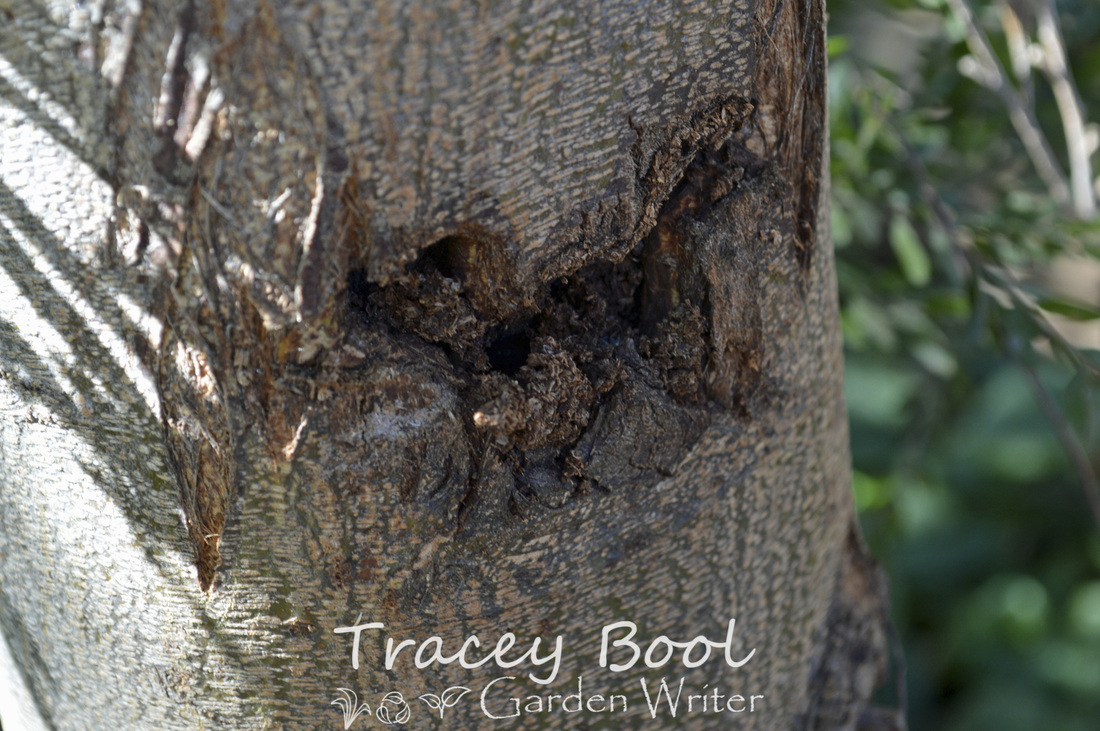|
Bark and Wood-Feeding Insects: Tree Borers
(21 August 2014) Tree boring insects are a not-uncommon sight on evergreen and deciduous trees and woody shrubs in the neighbourhood. There are lots of different types of borers, many of which attack dead wood only and are therefore beneficial to the garden ecosystem. However, there are also borers which attack live wood with often dire consequences. Some plant genuses are more prone to borer attack than others, such as Acacia, Gleditsia and Albizia (Silk Tree), for example. The occurrence of borers generally indicates health-related stresses including drought, poor soil and nutrition, human interference, or nearing the end of its productive lifespan (i.e. the subject in question has one sizeable bucket well and truly lined up in its sights). Discovering borers in your garden doesn’t mean you should rush off and purchase the meanest sounding pesticide to douse them with either; in fact, using pesticides in many cases is ineffective and costly. With this in mind, firstly assess the tree affected and consider/observe the following:
If you have ruled out the above concerns and would like to persist with and treat your tree for borer, you can try carrying out the following if practical to do so:
|

